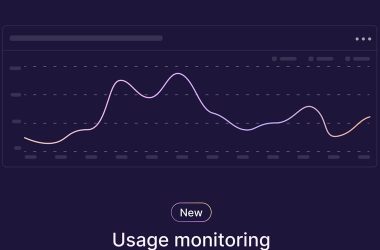In a market where attention is expensive and skepticism is permanent, one practical way to orient your roadmap is to pressure-test every initiative against community trust and real user outcomes; that’s why this perspective draws on lived patterns from teams shipping in public, as well as analyses like 5 marketing & PR trends helping crypto/tech startups stand out globally in 2025, to map what’s actually working right now.
Why trust beats hype (and how to build it)
Crypto—and broader frontier tech—now operate under a microscope. Users expect clarity, journalists demand proof, and partners want defensible risk controls. The fastest way to cut through is observable trust: verifiable information, reproducible metrics, and transparent decisions.
A simple test: if a skeptical developer, a cautious CFO, and a journalist read your announcement, can each independently verify your claims without chasing you on Telegram? If not, the story isn’t ready.
For a deeper lens on why credibility compounds, see Harvard Business Review’s argument that companies must prove they’re trustworthy with technology through transparent choices and guardrails—exactly the stance your roadmap should reflect (practical framing from HBR).
Narrative architecture that survives scrutiny
Your narrative is not a slogan; it’s a system. Treat it like you treat infrastructure:
- Problem thesis: precisely define the unsolved problem, including who is harmed today and how you measure the gap.
- Mechanism of change: show how your architecture (on-chain/off-chain, data model, incentive design) reduces that gap.
- Risk & trade-offs: name your known limitations (latency, custody, chain selection, oracle risk). Credibility lives here.
- Proof objects: ship artifacts users can validate: dashboards with methodology notes, open specs, threat models, and changelogs.
If your message can’t survive adversarial reading, it will fail in the wild. Bring the tension into the story before critics do.
What to publish (and what to stop publishing)
Stop flooding channels with “milestones” that don’t change user reality. Replace vanity with decision-useful materials:
1) System explainers, not fluff. Draw the actual data flows. Explain where trust is anchored (keys, signers, counterparts), which attack surfaces you’ve mitigated, and what remains unsolved. When you share diagrams, append plain-English failure modes.
2) Reproducible metrics. If you claim 40% cost reduction or 3x faster settlement, give the formula, the dataset window, and an open script. Don’t cherry-pick a week where network conditions favored you.
3) Risk memos. Quarterly risk notes (regulatory, counterparty, technical) help institutional readers and serious users make decisions. They also telegraph operational maturity.
4) User-level playbooks. Show how a small business, validator, or fintech actually deploys your tool in <60 minutes. Screenshots beat adjectives.
This cadence positions you not as a hype generator but as a reliable operator.
Channels that still move the needle (and why)
Owned channels are your control plane; earned channels are your credibility amplifier. The winning pattern in 2025 is documentation-first, distribution-fast:
- Ship docs and a runnable example first.
- Publish a plain-language companion post for dev.to readers who don’t live inside your repo.
- Offer a short data appendix for analysts and media (sources, timeframes, caveats).
- Then pitch or accept interviews once proof is public.
When you do pursue broader thought leadership, anchor it to widely tracked technology currents and adoption curves. For a bird’s-eye view of which frontiers are compounding, McKinsey’s 2025 tech trends analysis is a useful map for connecting your roadmap to enterprise-grade demand signals (tech trends overview).
Working with journalists without wasting anyone’s time
Reporters aren’t distribution for your press release; they’re risk-weighted validators for their readers. Help them do their job:
- Be verifiable. Provide links to code, audits, dashboards, and a named human who will answer technical follow-ups.
- Be specific. Replace “partnership” with the actual integration: APIs used, who operates custody, which fees change, and what it unlocks for users today.
- Be accountable. If something breaks, publish the post-mortem within 48 hours, including user impact and prevention steps. People forgive incidents—they don’t forgive silence.
The one list you actually need: four repeatable assets
- Threat model one-pager. What could go wrong, likelihood, mitigations, and who monitors it. Update quarterly.
- Metrics glossary. Define every KPI so numbers are comparable over time (and across posts).
- Public change log. Tie release notes to user-visible impact; link incidents and fixes.
- Evidence library. Centralize audits, benchmarks, usage studies, and case studies. When you pitch, you’re just curating links.
Community is an API, not a megaphone
Communities aren’t there to retweet you; they’re there to build with you. Give them interfaces: bounties with clear acceptance criteria, modular components, and guaranteed review SLAs. If your Discord is only announcements, it’s not a community—it’s a loud inbox.
A practical approach is to run time-boxed build seasons with three rails: (1) fixes that unblock real users, (2) proofs that validate new mechanisms, and (3) small products that test demand. Publish the scoreboard weekly (merged PRs, improved docs, resolved incidents).
Regulation is changing—design for resilience
Rules are moving, and they’ll keep moving. Design products that degrade gracefully under tighter KYC/AML, custody, or disclosures. Write your controls so you can flip from “open by default” to “permissioned enclave” without rewriting the world. If your value prop collapses under scrutiny, it wasn’t a product—it was a loophole.
The uncomfortable truth (and the advantage you gain)
Most teams over-promise, under-instrument, and avoid naming trade-offs. That’s your opening. Precision is a moat. If you consistently publish verifiable work, respond quickly when something breaks, and keep your message aligned with what ships, you’ll outlast louder competitors.
In 2025, the winning signal isn’t the shiniest deck—it’s the team that operates like an engineering org in public: honest about limits, obsessive about clarity, and relentless about closing the gap between promise and product. That’s how you earn trust you don’t have to buy—and how you keep it when markets turn.





